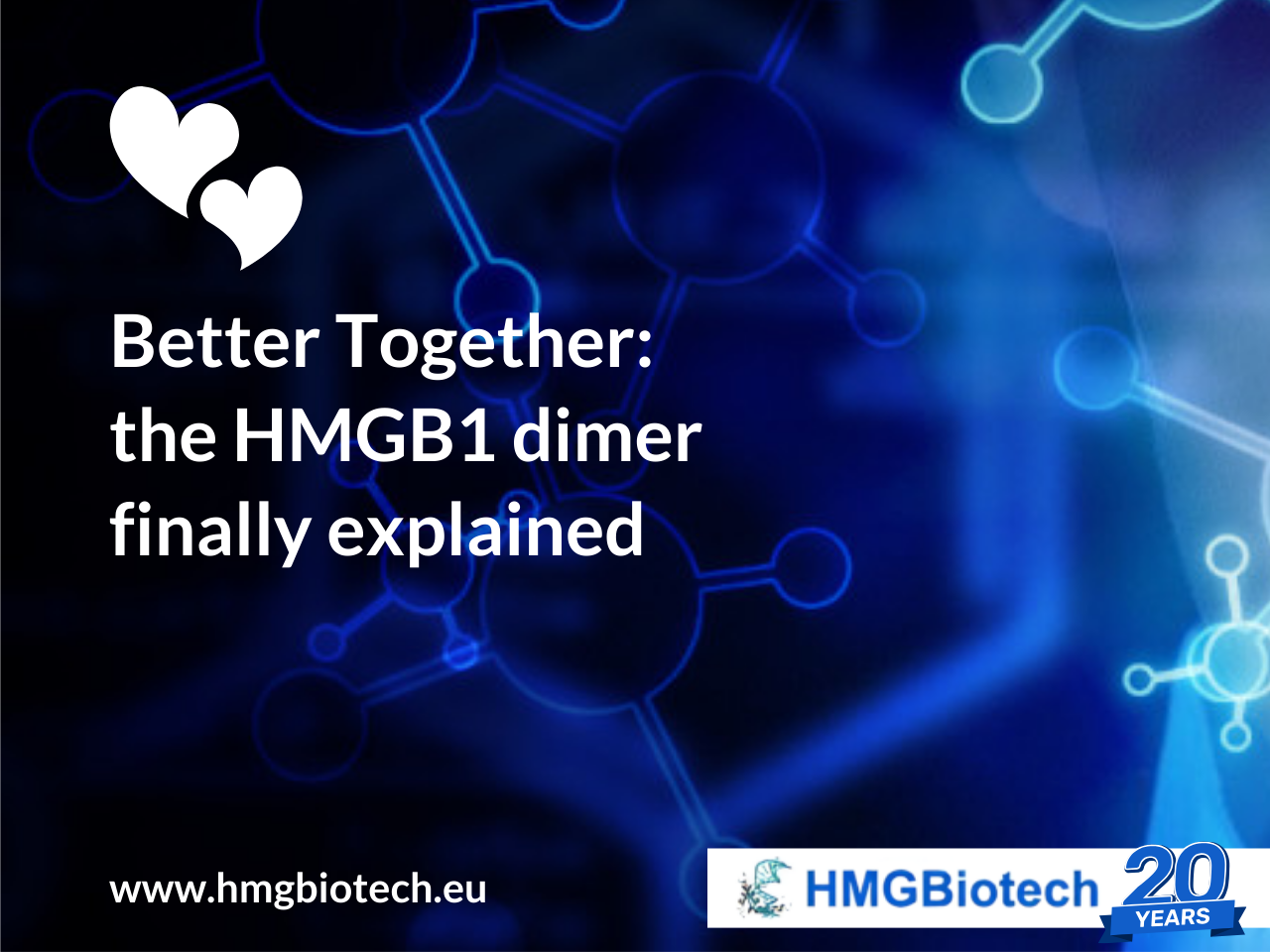This Valentine’s Day, we celebrate the power of pairs, highlighting a long-standing unsolved aspect in HMGB1 biology: its ability to form dimers, and how this union amplifies inflammation.
For years, researchers observed that HMGB1 could form dimers in vitro, but the biological significance remained unclear.
A recent study has revealed that HMGB1 dimerization is not just a structural curiosity but a key player in immune signaling. When two HMGB1 molecules join through a Cys106–Cys106 disulfide bond, their inflammatory potential intensifies.
Under oxidative conditions, HMGB1 dimers bind more effectively to TLR2 and TLR4, enhancing NF-κB activation and cytokine production compared to monomeric HMGB1. This mechanism links oxidative stress, PAMPs, and amplified immune responses, positioning dimeric HMGB1 as a crucial pro-inflammatory signal.
So, just like strong couples, HMGB1 dimers work best that single molecules driving inflammation in diseases where ROS (reactive oxygen species) levels are high. Understanding this interaction opens new possibilities for targeting HMGB1-driven inflammation in sepsis, arthritis, and other inflammatory conditions.
But what happens when a molecule loses its dimeric structure? Interestingly, another recent study on HMGB1-targeting G-quadruplex (G4) aptamers provides a parallel example. These aptamers, which were previously highly stable and bioactive in their dimeric G4 conformation, lost their function after an annealing process that forced them into a monomeric form.
The result? Weaker HMGB1 binding, reduced stability, and diminished biological activity.
HMGBiotech Srl provides comprehensive information to facilitate informed decision-making for researches with HMGB1.
Contact us for your pre-sales questions about HMGB1
Read the full articles about the studies:
https://www.sciencedirect.com/science/article/pii/S2213231725000345
https://www.sciencedirect.com/science/article/pii/S0141813024079571

